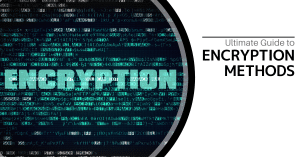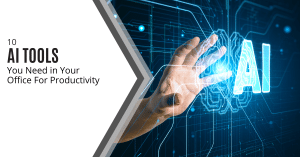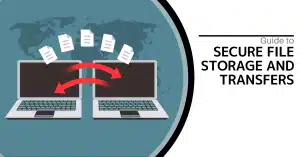Nonprofits require efficient IT services to operate effectively and achieve their missions. These services enhance productivity, security, and communication.
Nonprofits often operate with limited resources and high demands. Reliable IT services can streamline operations, improve security, and facilitate better communication. Whether it’s managing donor databases, ensuring data security, or enabling remote work, IT support is crucial. Cloud solutions, cybersecurity measures, and software tailored for nonprofits can significantly enhance efficiency.
Partnering with SRS Networks, which is familiar with nonprofit needs, can provide cost-effective solutions and ongoing support. Investing in the right technology helps nonprofits focus on their core mission while ensuring smooth and secure operations. This strategic approach enables nonprofits to maximize their impact and serve their communities better.
Importance Of It Services
The importance of IT services for nonprofits cannot be overstated. With technology, nonprofits can streamline operations and reach more people. IT services help nonprofits achieve their goals efficiently and effectively.
Enhancing Efficiency
IT services improve productivity within nonprofit organizations. Automated systems reduce manual tasks. This frees up time for staff to focus on mission-critical work. Efficient processes mean better service delivery. Technology solutions also help in managing donor information, tracking funds, and organizing events. Enhanced efficiency leads to better outcomes for the community.
Cost Savings
Nonprofits operate on tight budgets. IT services can significantly cut costs. Cloud computing reduces the need for expensive hardware. Software as a Service (SaaS) provides affordable options. Open-source software can be a cost-effective choice. IT services also help in reducing operational expenses. Efficient systems mean fewer errors and less waste.
Cost savings allow nonprofits to allocate more funds to their core missions. This means more resources for community programs and support. Technology investments can pay off quickly, leading to long-term savings.
Common It Services For Nonprofits
Nonprofits rely on technology to achieve their missions. They need efficient and secure IT services. Here, we discuss common IT services for nonprofits. These services help organizations operate smoothly and focus on their goals.
Cloud Solutions
Cloud solutions provide flexibility and scalability. Nonprofits can store data securely in the cloud. This ensures easy access from any location.
Benefits of cloud solutions include:
- Cost-Effective: No need for expensive hardware.
- Remote Access: Work from anywhere, anytime.
- Data Security: Protect sensitive information.
- Collaboration: Teams can work together easily.
Popular cloud services include Google Drive, Microsoft OneDrive, and Dropbox. These platforms offer various features to meet nonprofit needs.
Managed It Services
Managed IT services help nonprofits maintain their IT infrastructure. These services include monitoring, support, and maintenance.
Key benefits are:
- Proactive Monitoring: Identify issues before they become problems.
- 24/7 Support: Access help anytime you need it.
- Cost Savings: Reduce expenses with predictable costs.
- Expertise: Rely on skilled professionals for IT management.
Managed IT services ensure nonprofits can focus on their mission. They provide peace of mind and reliable support.
| Service | Benefits |
|---|---|
| Cloud Solutions | Cost-effective, remote access, data security, collaboration |
| Managed IT Services | Proactive monitoring, 24/7 support, cost savings, expertise |
Choosing The Right It Partner
Finding the right IT partner is crucial for nonprofits. They need reliable, cost-effective, and mission-aligned services. This decision impacts daily operations and long-term goals. Here’s how to choose the perfect IT partner.
Assessing Needs
Start by understanding your organization’s specific needs. Make a list of current challenges and future goals. Determine what types of IT services are essential.
- Data Management
- Cybersecurity
- Cloud Services
- Help Desk Support
Data Management helps in organizing and storing information securely. Cybersecurity protects your organization’s data from threats. Cloud Services offer flexible storage and computing power. Help Desk Support provides immediate assistance for technical issues.
Evaluating Providers
After assessing needs, evaluate potential IT providers. Look for companies with experience in the nonprofit sector. Check their service offerings and support levels.
| Criteria | Importance |
|---|---|
| Experience with Nonprofits | High |
| Service Offerings | High |
| Customer Support | High |
| Cost | Medium |
Check references and read reviews. Ask questions about their approach to data security and customer support. Ensure their pricing aligns with your budget.
Make a shortlist of providers that meet your criteria. Schedule meetings to discuss your needs and their solutions. Choose a provider that understands your mission and offers tailored services.
Implementing Technology Solutions
Nonprofits often face challenges with limited resources. Implementing technology solutions can boost efficiency and impact. It involves careful planning, strategy, and staff training.
Planning And Strategy
Planning is the first step in implementing technology solutions. Nonprofits should assess their current tech needs. They must identify gaps and set clear goals. A solid strategy helps in deploying the right tools. This ensures that resources are used effectively.
A strategic plan should include:
- Needs Assessment: Identify what tech solutions are required.
- Budgeting: Allocate funds wisely for tech investments.
- Timeline: Set realistic timelines for implementation.
- Vendor Selection: Choose reliable tech vendors.
A well-thought-out plan can streamline operations. It helps in achieving the nonprofit’s mission with greater efficiency.
Staff Training
Staff training is crucial for successful tech implementation. Nonprofit staff must be comfortable with new technologies. Training ensures they can use tools effectively. It also boosts their confidence.
Key aspects of staff training include:
- Initial Training: Provide comprehensive training sessions.
- Ongoing Support: Offer continuous support and updates.
- User Manuals: Create easy-to-follow user guides.
- Feedback Mechanism: Allow staff to provide feedback.
Effective staff training can lead to better adoption of tech solutions. It enables the nonprofit to operate smoothly and achieve its goals.
Cybersecurity For Nonprofits
Nonprofits often handle sensitive data. This data includes donor information, financial records, and personal details of volunteers. Protecting this data is crucial. Cybersecurity measures ensure this information stays safe from hackers and breaches. Investing in cybersecurity helps nonprofits maintain trust and integrity.
Protecting Data
Nonprofits must protect their data. This includes donor details and financial records. Sensitive information should be encrypted. Encrypted data is harder for hackers to access. Strong passwords and multi-factor authentication add extra layers of security.
Avoid using the same password for multiple accounts. Regularly update passwords to keep them secure. Train staff and volunteers on the importance of data protection. Educate them about phishing scams and suspicious emails.
Best Practices
- Use Antivirus Software: Install and update antivirus software. This helps detect and remove malware.
- Regular Backups: Regularly back up all important data. Store backups in a secure location.
- Secure Networks: Use secure Wi-Fi networks. Avoid public Wi-Fi for accessing sensitive information.
- Update Software: Keep all software and systems updated. This includes operating systems and applications.
- Access Control: Limit access to sensitive data. Only authorized personnel should have access.
Implementing these best practices helps safeguard your nonprofit’s data. Cybersecurity is essential for maintaining trust with donors and volunteers. Stay proactive in protecting your organization’s digital assets.
| Cybersecurity Measure | Description |
|---|---|
| Antivirus Software | Detects and removes malware |
| Regular Backups | Protects data from loss |
| Secure Networks | Prevents unauthorized access |
| Update Software | Fixes security vulnerabilities |
| Access Control | Limits access to sensitive data |
Leveraging Data Analytics
Nonprofits often work with limited resources. Leveraging data analytics can maximize impact and efficiency. Data analytics helps nonprofits make informed decisions, track progress, and improve strategies. This section explores key benefits of data analytics for nonprofits.
Tracking Impact
Nonprofits need to measure their success. Tracking impact helps them understand the effectiveness of their programs. Using data analytics, nonprofits can:
- Monitor project outcomes
- Track donor engagement
- Measure volunteer contributions
Data analytics tools provide detailed reports. These reports show which projects are most effective. This information helps nonprofits focus on what works best.
Informed Decision Making
Data analytics supports informed decision making. Nonprofits can use data to guide their strategies. This leads to better outcomes. With data insights, nonprofits can:
- Identify trends and patterns
- Allocate resources efficiently
- Plan future initiatives
For example, data can reveal which fundraising methods are most successful. Nonprofits can then invest more in these methods. This ensures higher returns on investment.
| Data Metric | Benefit |
|---|---|
| Donor Retention Rates | Improves long-term funding |
| Volunteer Hours Tracked | Enhances volunteer management |
| Program Success Rates | Optimizes program effectiveness |
Using data, nonprofits can pivot strategies quickly. This agility helps them meet their goals more effectively.
Fundraising With Technology
Nonprofits often face challenges in raising funds. Leveraging technology can transform fundraising efforts. From online campaigns to advanced donation platforms, technology offers powerful tools.
Online Campaigns
Online campaigns are essential for modern fundraising. They reach a wider audience quickly. Social media platforms like Facebook and Twitter amplify reach. A well-designed campaign page engages donors. Use images and videos to tell your story. Email marketing remains effective. Send regular updates to keep supporters informed. Crowdfunding sites like GoFundMe can attract many small donations.
- Social Media: Share updates and engage with followers.
- Campaign Page: Include compelling visuals and clear calls-to-action.
- Email Marketing: Keep your supporters updated and engaged.
- Crowdfunding: Utilize platforms like GoFundMe for small contributions.
Donation Platforms
Donation platforms streamline the giving process. They offer secure and easy donation options. Platforms like PayPal and Stripe integrate with websites. They support one-time or recurring donations. Nonprofits can track donations and donor information. Mobile donations are growing in popularity. Text-to-donate options make giving effortless. Ensure your platform is mobile-friendly.
| Platform | Features |
|---|---|
| PayPal | Secure, easy integration, supports recurring donations |
| Stripe | Robust, customizable, supports multiple payment options |
| Mobile Donations | Text-to-donate, mobile-friendly interfaces |
Choosing the right platform enhances donor experience. It increases trust and encourages repeat donations.
Future Trends In Nonprofit It
The world of IT is changing fast for nonprofits. New trends are making it easier for these organizations to serve their communities. Let’s explore some of the key trends shaping nonprofit IT.
Ai And Automation
Artificial Intelligence (AI) and automation are revolutionizing nonprofit IT. These technologies help automate repetitive tasks. For example, chatbots can handle common questions from donors. This frees up staff to focus on more important tasks.
AI can also help with data analysis. It can find patterns and insights in large datasets. This helps nonprofits make better decisions and improve their programs.
Some key applications of AI and automation in nonprofits include:
- Donor management
- Predictive analytics for fundraising
- Automated social media posting
Remote Work Solutions
Remote work is becoming more common in the nonprofit sector. Cloud-based tools and collaboration software are making this possible. These tools allow staff to work from anywhere. This flexibility can help attract and retain top talent.
Some popular remote work solutions include:
- Video conferencing tools like Zoom and Microsoft Teams
- Project management software like Asana and Trello
- Cloud storage solutions like Google Drive and Dropbox
Remote work can also help reduce costs. Nonprofits can save on office space and utilities. This means more resources can go towards their mission.
Frequently Asked Questions
What It Services Do Nonprofits Need?
Nonprofits need IT services like cloud solutions, cybersecurity, and data management. These services help streamline operations, secure data, and enhance productivity.
How Can It Services Benefit Nonprofits?
IT services improve efficiency, reduce costs, and enhance data security. They also enable better communication and collaboration, helping nonprofits achieve their goals.
Are It Services Affordable For Nonprofits?
Yes, many IT providers offer discounted rates for nonprofits. Some even provide pro bono services, making IT solutions accessible and affordable.
Can It Services Help With Nonprofit Fundraising?
Absolutely, IT services can optimize fundraising through donor management systems. They streamline donor communication, track contributions, and analyze fundraising data.
Conclusion
Nonprofits can greatly benefit from tailored IT services. These services enhance efficiency, security, and overall mission impact. Investing in proper IT support helps nonprofits focus on their core objectives. Partner with a reliable IT service provider to ensure success and growth.
Your nonprofit deserves the best tools and support to thrive.








